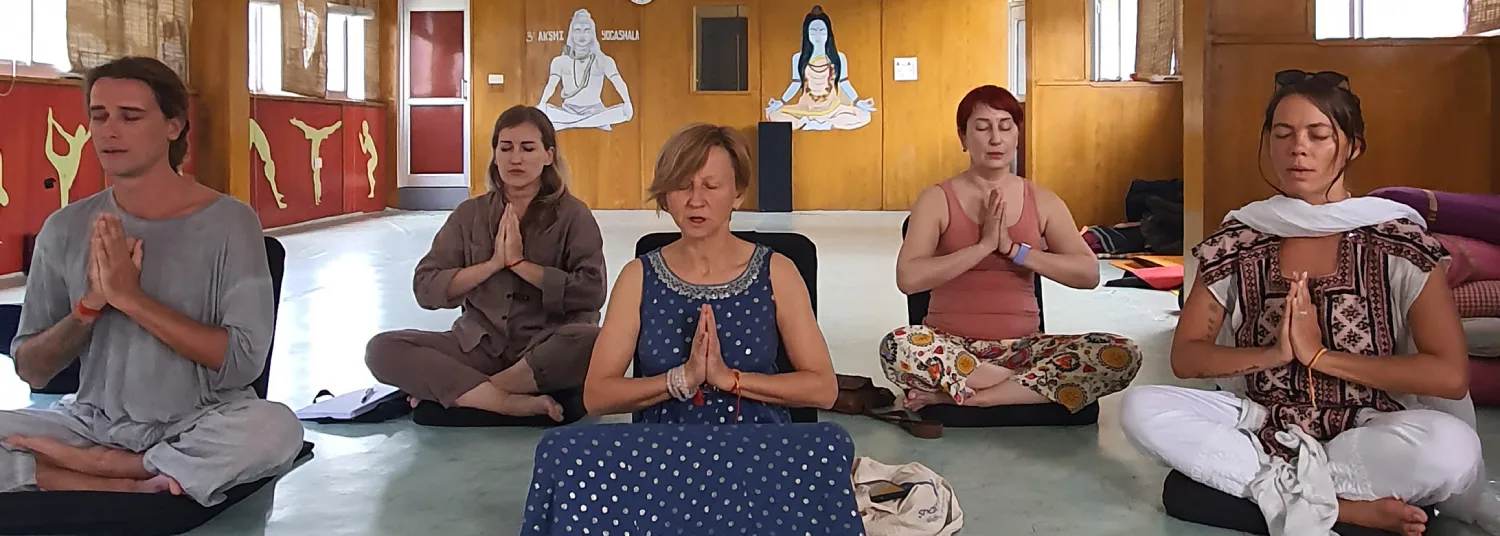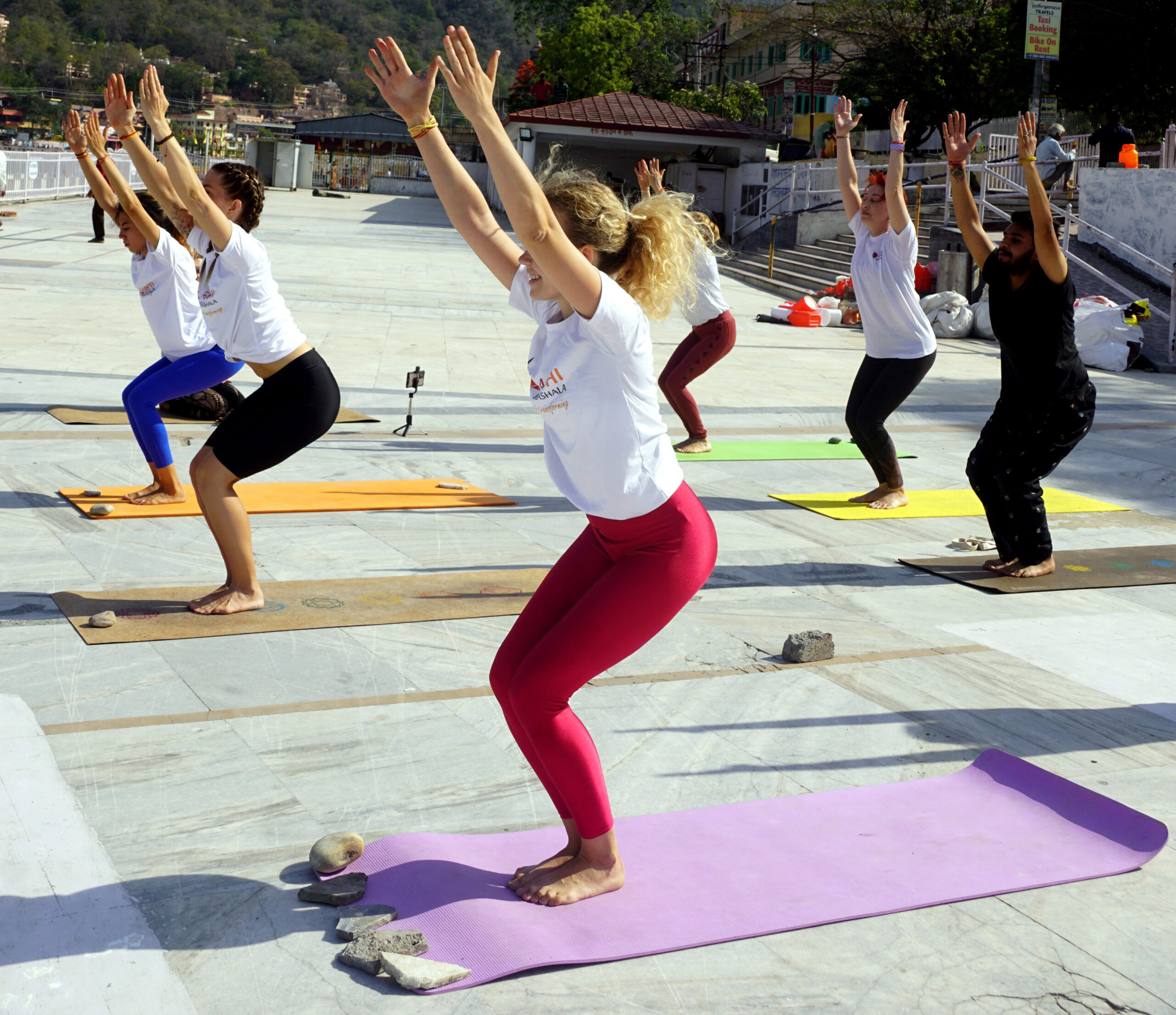Welcome to your yoga journey! When you try Chair Pose your legs shake while the muscles in your thighs continuously burn. You’re not alone! The powerful Utkatasana asana can build body strength and tone your frame yet may generate typical errors when performed haphazardly. This post will go through vital safety measures to help you stay away from common errors during your practice and improve your yoga sessions. Join our community to discover essential alignment techniques while mastering the proper form of this pose so you can reach complete chair position with elegance and self-assurance. We are about to change our practice approach as a team so let’s begin.
Introduction to Chair Pose (Utkatasana) and its benefits
Utkatasana also known as Chair Pose challenges your stability while simultaneously enhancing every muscle group in your body. The entire body becomes active during this pose when you sit back into an illusory chair while targeting your core and legs and arms simultaneously. This energetic stance both develops your physical capabilities and develops your mental focus with determination.
Your commitment to practicing Utkatasana will reveal three main advantages: it increases endurance while improving posture and increasing flexibility in your body. The mastery of Chair Pose demands careful attention to each specific aspect even though it is a yoga exercise. Atypical form and carelessness during practice might lead to pain or harm.
Now you have what it takes to reach greater results with your Chair Pose practice. The correct practice of Utkatasana exists and we will study both the proper execution methods and the mistakes to avoid for better progress. From this point begins your path to master Utkatasana version of the pose.
Check Out: Best 200 Hour Yoga Teacher Training in Rishikesh
Step-by-step guide on how to do Chair Pose correctly
Utkatasana begins from a standing position where feet remain together. The first step in Utkatasana is evenly distributing your body weight through both heels.
During your inhalation time raise your arms overhead. The arms can stay parallel to one another or you can choose to join palms if your body allows it.
The act of exhalation triggers a bending of your knees alongside hip back push as though you were sitting on a chair. Let your knees maintain position over your ankles as you refrain from allowing your feet to extend ahead of your ankles.
Contract your core muscles while doing this exercise to maintain stability. Stand straight with the spine while pulling your shoulders toward your back.
Sustain this pose for several breath cycles by lengthening your spinal bones and grounding your feet firmly on the surface. This strong posture develops mental and physical strength throughout your breathing cycle.
Common mistakes people make when practicing Chair Pose
The main error in performing Utkatasana occurs when your knees surpass the position of your toes. Your joints become vulnerable and may result in injuries when you perform this action. Check that your knees sit directly above your ankles when performing this pose.
The mistake of rounding the back occurs frequently during this posture. Having a straight spine remains vital because it keeps your body balanced while avoiding discomfort. Support your chest in a lifted position throughout the posture.
Core muscles are usually neglected in the practice of many practitioners. By using abdominal muscles correctly you both maintain stability and increase strength during such a demanding yoga pose.
The tension within your shoulders that exceeds levels of relaxation serves as an inhibitor for the complete release of tension in this posture. The goal is to unlock muscle tension through an expansion motion of the collarbones which preserves upper body stability.
Precautions to take before attempting Chair Pose
Evaluation of your physical state must occur before starting Utkatasana practice. Obtain professional medical advice before performing Utkatasana if you suffer from knee or back injuries. Your good health status will reduce the risk of strain.
Perform a proper warm-up before attempting the exercise. Stretching your hips and legs carefully will help your body adapt to the challenges of Chair Pose.
Regularly check your body alignment during your entire practice time. Maintaining a correct alignment of knees above ankles remains essential to protect your joints from harm.
Start by resting against a wall to maintain balance if exhaustion or instability affects your body. Form-oriented practice becomes possible because you do not need to sacrifice your body’s equilibrium.
Lastly, listen to your body. Discontinue the pose carefully instead of struggling with discomfort that arises during your practice. Exercising yoga needs to strengthen you rather than inflict pain.
Modifications and variations for beginners or those with injuries
Utkatasana modifications enable both novices and injured practitioners to perform the pose safeguarding and easily. Beginners and individuals with injuries should first lean against a supportive chair before proceeding. Such support enables you to concentrate on your position instead of putting your body at risk.
You should practice Utkatasana while keeping your feet set at hip-distance from each other instead of side-by-side. Your wide stance offers better balance and stability because it activates more muscle engagement during this position.
You should decrease the depth of your squat when performing the pose becomes difficult. A moderate depth in the position allows you to build strength without pushing your body past its limits.
To support your sit bones during an imaginary seated position place a block beneath them. A block under your sit bones provides strengthened support which keeps your body alignment proper.
During your workout period carefully listen to your body since it demands recognition of its current functional ability while testing out this significant pose. Your patience will reveal different modifications of Utkatasana suitable for your needs.
Check Out: 300 Hour Yoga Teacher Training in Rishikesh
Benefits of practicing Chair Pose regularly
Daily practice of Utkatasana brings numerous physical advantages together with mental advantages to the body. Utkatasana provides strong development for thighs along with calves and lower back muscles which also enhances your overall posture.
The core part of your body activates itself when you maintain this pose which creates better stability and balance. Better execution in additional yoga positions becomes possible because of this posture engagement.
The movement towards Chair Pose stimulates heart performance through expanded deep lung respirations. Better oxygen circulation through the body results in relaxation together with decreased stress.
The practice gradually develops your endurance capacity. Your growing practice develops stronger resilience which you can experience during and outside of your yoga exercises.
Utkatasana enhances focus too. Balancing during practice increases your mindfulness because it makes you present in the moment.
This pose strengthens your body and promotes mental clarity so you achieve full wellness benefits in a single exercise.
Conclusion: The importance of proper form in yoga poses and the impact it can have on your practice
Transforming into Utkatasana involves both physical strength and solid body alignment and mental attentiveness. Proper form serves to achieve full advantages from this pose as it reduces potential risks to your safety in your practice. All your body components must function together in order to establish and maintain equilibrium and steadiness.
Both your knee positioning over your ankles and the maintenance of your spinal elongation should be your focus when practicing Utkatasana. Both comfort and effectiveness receive substantial improvements through small alterations to body position. Disciplined practice of this posture will improve your yoga techniques beyond Upavista Konasana.
Regular practice fosters greater flexibility, strength, and mental clarity. The correct execution of poses develops your stronger bond with all postures you perform. Remember that mindfulness forms an equal part of yoga practice just like its physical aspects. Good form practices lead to deep transformation throughout your entire practice and off-mat life.


